Investigation on Making the Community in Gambia Self-Sufficient
Info: 16890 words (68 pages) Dissertation
Published: 13th Dec 2019
Abstract
In third-world countries, there are millions of people that do not have access to electricity at all and those who have access to it, get it unreliably, especially in the Gambia where the main electricity providers depend on very expensive fuel imports to produce power to the country through diesel generators. However, there is problem in the Gambia and that is, the demand for electricity is much higher than the supply. The Gambia is a small area country of 11,570
Km2with abundance and high sunlight radiation at an average of
5.7kWh/m2/day which can be used as an energy source to produce power and help the electricity demand match the supply. Besides this high radiation, the Gambia is exposed to sunlight for at least 9 or 10 hours every day.
The aim of this dissertation is to investigate ways to make a community in the Gambia more self-sufficient and with further work, it could expand and become nationwide to produce most of the country’s power by probably adding different renewable energy technologies which will help cut down the Gambia’s spending and dependence on imported fuels. This would also fulfil another aim which is to cut down the carbon emissions by the current power producing systems in the Gambia. Another aim was to be able to solve the problem mentioned in the previous paragraph and provide electricity to people who do not have any access to it and make it more reliable to those who have it.
Findings from analysis identified the potential for different renewable energy sources in the Gambia and whether or not they will succeed or not. The different sources explored were Solar, Wind and Tidal energy. The most successful source found and firstly analysed was Solar Energy as it was available in abundance in the Gambia. The research also identified the economic and social benefits of renewables and also different laws set out by the government laws and targets for renewable energy in the country.
Abbreviations
PV- Photovoltaics
GBA- Greater Banjul Area
GEG- Global Electrical Gambia
IPP- Independent Power Producer
NAWEC- National Water & Electrical Company Ltd
LFO- Light Fuel Oils
HFO- Heavy Fuel Oils
ECI- Economic Complexity Index
GBOS- Gambia Bureau Of Statistics
LGA- Local Government Area
GAP- Gambia Petroleum
Pmax- Temperature Coefficient
Vmax- Maximum Power Voltage
LCC- Life Cycle Cost
ALCC- Annual Life Cycle Cost
OMVG- “Organisation de Mise en Valeur du Fleuve Gambia”
GHI- Global Horizontal Irradiance
DNI- Direct Normal Irradiance
LCOE- Levelized Cost Of Energy
NPC- Net Present Cost
TCO- Total Cost of Ownership
Contents
2.2. Electricity Sector and Power cuts of the Gambia
2.3. How are fuel imports affecting the economy of the Gambia?
2.3.1. Economic Benefits of using Renewables
2.3.2. Benefits of Renewable Energy
2.3.3. Drawbacks of Renewable Energy
1.5. Institutions and Energy policy in the Gambia
1.5.1. Key Energy related Institutions
1.6. Potential for Renewable Energy
1.6.1. Potential of Solar Energy
2.6.1.1 Solar Photovoltaic Vs. Solar Thermal Energy
2.6.2. Temperature effects on Photovoltaic System efficiencies
2.6.3. Practical Photovoltaic System Applications
2.6.4. Solar Thermal Energy Systems
1.8. Potential of Tidal Energy
Chapter 3: Methods, Design and Implementation
3.2. Design and Implementation
3.4. Installation Possibilities
5.2. Literature Review findings summary
Chapter 6: Conclusion and Further work
Chapter 1: Overview
1.1 Introduction
The Gambia is a third-world country that lies on the west coast of Africa which faces the Atlantic Ocean from its west whilst being surrounded by Senegal from the north, south and east with an area of 11,570
Km2and extends about 400 Km inland(Singh, Alzouma Nouhou and Youba Sokona, 2013). The country has an estimated population of 1.9 million (2013) having population density of 120 people/
Km2(World Bank, 2017). Due to its location, The Gambia enjoys a hot, tropical weather throughout most of the year which means that it has long hours of sunlight throughout the day and fairly high wind speeds. In addition, the Gambia’s economy growth mainly depends on tourism, farming and fishing and having a third of the population living at £0.75/a day which is under the international poverty line.
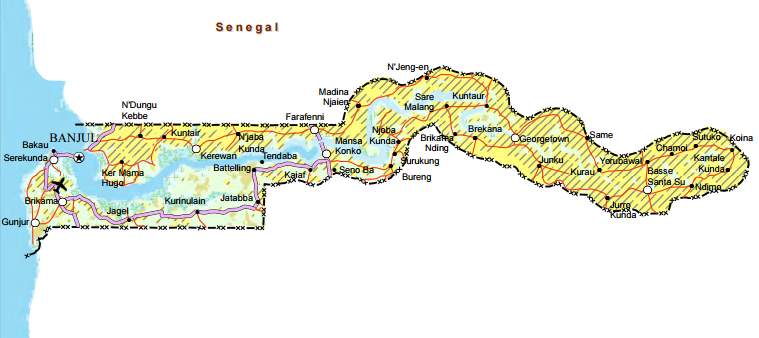
Diagram 1.1- Map of the Gambia
OCHA, 2017
In the Gambia, the main electricity provider is a company called NAWEC (National Water and Electricity Co. Ltd) established in June 1996. NAWEC is responsible for the generation and distribution of electricity to the public, businesses and industries of the Gambia. Another task of the company is the provision of water and sewerage services for domestic, public and industrial purposes. The government owns the electricity, water and sewerage assets but NAWEC manages and operates them. NAWEC is unable to expand its system and be more efficient even though it has achieved financial sustainability this is due to the fact that the demand for electricity has grown much more than the available power installed. (NAWEC, 2012)
Currently, NAWEC has 7 isolated power stations across the country with a total installed capacity of 85MW and all of these power stations are run by aging diesel generators that either use LFO (Light Fuel Oil) or HFO (Heavy Fuel Oil). Due to this type of system used, NAWEC faces a few challenges such as very frequent breakdowns and very high maintenance costs due to the ageing power generation sets. (NAWEC, 2012)
With a total installed capacity of 85MW, this can be a problem as the Gambia’s development is on the rise; new houses and hotels being built, new businesses opening up, and also the industrial sector is expected to expand in the coming years as this small country is getting more recognition from foreign investors and other countries by the year. In order to be able to accommodate all these expansions, the Gambia must be able to come up with ways to match the electrical demand. The answer to this problem would be Solar power stations. (NAWEC, 2012)
The main aim of this project is to be able to introduce renewable energy into the country and provide clean energy without causing any harm to the environment but the main point of focus would be proving that Solar energy would be the most suitable source of renewable energy for the Gambia and also showing that it is a very feasible and affordable project for the country. Another aim of this project is for the public to experience constant supply of electricity 24/7. This project will look at introducing renewable energy to smaller towns where it is moderately busy and has a little activity going on, around schools, clinics, and houses. After the new system is up and running smoothly, the project will look to expand on a bigger scale to cities. This will be slow process but a very useful one to reduce carbon emissions as the country only depends on diesel imports to generate power.
NAWEC provides power supply to the Greater Banjul Area (GBA) by operating power stations that mainly run on heavy while Diesel Power stations power up the provinces (Rural). Electric energy is purchased from Global Electric Gambia (GEG), an Independent Power Producer (IPP) by NAWEC since 2006. Also a rural community of Batokunko operates a scale wind turbine that is connected to the NAWEC grid. The two power stations that operate within the GBA are:
- Kotu Power Station- KPS
- Birkama Power Stations- BPS I and II which are IPPs
The total installed electricity generation capacity at KPS, 2011 is shown in the table below:
| Generators | Installed Capacity, MW |
| KPS-G1 | 3.0 |
| KPS-G2 | 3.0 |
| KPS-G3 | 3.4 |
| KPS-G4 | 6.4 |
| KPS-G6 | 6.4 |
| KPS-G7 | 6.4 |
| KPS-G8 | 6.4 |
| KPS-G9 | 6.4 |
| KPS-G11 | 0.0 |
| BPS-Wartsila1 | 9.0 |
| Total | 50.4 |
Table 1.1- NAWECs’ total installed capacity in KPS
NAWEC, 2012
If noticed, there is no KPS-G5 installed in KPS yet as shown in the table above due to confidential reasons that were not given but a NAWEC official confirmed that this generator is set to be installed in 2017.
The total installed electricity generation capacity at BPS is shown in the table below:
| Generators | Installed Capacity, MW |
| BRK-G1 | 6.4 |
| BRK-G2 | 6.4 |
| BRK-G3 | 6.4 |
| BRK-G4 | 6.4 |
| BRK-G5 | 0.0 |
| BRK-G6 | 0.0 |
| Total | 25.6 |
Table1.2- NAWECs’ total installed capacity in BRK
NAWEC, 2012
And the total installed electricity generation in the provinces is shown below:
| Provincial Stations | Installed Capacity, kW |
| Barra | 368 |
| Kerewan | 536 |
| Kaur | 145 |
| Farafenni | 1,400 |
| Basang | 600 |
| Basse | 1,560 |
| Total | 4,249 |
Table 1.3- NAWECs’ total installed capacity in provinces of the Gambia
NAWEC, 2012
The total installed capacity in the Gambia is 85 MW with 7 isolated power stations in the provincial regions. In the Gambia, the annual power production is at a rising 250 GWh with a peak load base on available and the electricity supply is completely conquered by fossil fuels that are imported. These fuels are Light Fuel Oils (LFO) and Heavy Fuel Oils (HFO).
Chapter 2: Literature Review
2.1. Intro
Of recent years, so many countries face big problems in being able to generate enough electricity to match the demands of the public forcing them into energy crisis and the biggest victims of this crisis are the third-world countries and Gambia being one of them. The energy crisis can be caused by various reasons and the infamous one in the Gambia is the ageing infrastructure of the power generating equipment leading to inadequate power generating capacity (Mwenechanya, 2013). This means that the demand will be more than available installed power. (The Gambia Sustainable Energy for All Rapid Assessment and Gap Analysis, 2012)
NAWEC for example, still uses outdated diesel engines from the year 1990 that were brought into their various power stations as second hand equipment due to the lack of funds to gradually replace aging engines. Another leading factor is limited investment in renewable energy options which is also due to the lack of provision of funds. In the Gambia renewable energy still remains unused commercially and most if not all of the energy produced is from fossil fuels and the country is having a very good source of solar energy as a day last for at least 9-10 hours throughout the year. Very rare occasions can see the country experience 8 hours. Although the capital investment cost of renewable energy can be somewhat expensive, there are more benefits than drawbacks which will be discussed later on in this chapter.
2.2. Electricity Sector and Power cuts of the Gambia
Modern energy services supply plays an important role in the growth of economies. Energy availability opens more doors in the production sectors, in value addition and the domestic sector making them all take part in economic growth. Contrary to that, the absence or limitation in supply of modern energy restricts economic growth. The insufficient availability of overpriced reliable power is negatively affecting the investment in the Gambia and is also restricting the productive sector growth (Eckebil, 2000).
Since the Gambia is a third-world country, resources of energy are extremely limited and one of its major problems is to provide power at all time to all residents, offices, business and so on and so forth. This is mainly due to the fact that the Gambia relies completely on petroleum imports to produce power for all commercial needs which is entirely diesel based. (NAWEC, 2012)
In addition, due to the country being a third-world, its diesel based power stations are old which means that break-downs happen very often causing some towns and sometimes cities not to have electricity for long hours and sometimes days. Major breakdowns also occur every now and then that causes a blackout across the whole country.

Figure 2.1- Electricity infrastructure of the Gambia
2.3. How are fuel imports affecting the economy of the Gambia?
In 2009, the Gambia spent approximately $47m on petroleum imports which was 15.5% of total imports and for a small third-world country, that is a very large number. Spending that much money on petroleum imports makes Gambia face a major problem and that is using up the country’s little foreign exchange (Singh, Alzouma Nouhou and Youba Sokona, 2013). The foreign exchange being used up is not the only issue, but the great reliance on fuel imports makes the country really vulnerable to the instability of oil prices. This is one reason that makes the Gambia to have one of the highest electricity tariffs in the sub-region. (The Gambia Sustainable Energy for All Rapid Assessment and Gap Analysis, 2012)
The energy sector in the Gambia is characterized by four important features:
- Depending mainly on fossil fuel imports
- Little access to modern day power generating technologies
- Investments in renewable energy is very limited
- Investments to maintain or replacing old electrical generation and supply equipment is limited
In 2002 the electricity tariff ranged between £0.11/kWh to £0.15/kWh, and in that year consumption of 80GWh whilst 104GWh was consumed in 2010 as reported by NAWEC and the major consumers where the households facing extremely high electricity costs. Due to this high tariff prices many households struggled to pay their electricity bills. Currently the Gambia’s transmission and distribution system is facing issues to meet power demand due technical and non-technical losses requiring improvements in the systems efficiency which will make it very possible to reduce the high energy costs. (The Gambia Sustainable Energy for All Rapid Assessment and Gap Analysis, 2012)
2.3.1. Economic Benefits of using Renewables
According to the Economic Complexity Index (ECI), the Gambia ranks as the 177th largest export economy and it has the 94th most complex economy in the world and according to the United Nations Statistics Division (2015), the country exported a total sum of $103.9m in the year 2015 and imported a staggering $387.2m resulting in an undesirable negative trade balance of $283.3m or in other words debt.
With Renewable energy such as Solar, the country can cut down expenses and spending on fuel imports and spending it somewhere else, perhaps improving the standard of living in the country. The difference might not be noticed in the first year or two because the country is new to these technologies but once it settles and is stable progress will be achieved. If this project surpasses its goal in the future and has room for expansion, the Gambia can start providing electrical power for other neighbouring countries at lower rates and thereby contributing to income of the country.

Table 2.1- Import and Export expenses of the Gambia, 2015
(Data.un.org, 2015)
In the same report from the United Nations Statistics Division, the unemployment percentage rose by 0.4% in the period of 4 years. Introducing this project in the Gambia can create fulltime, part time and internship job opportunities for many upcoming engineers, technicians, accountants and other roles to bring the unemployment percentage to a minimum to reduce social costs.

Table 2.2- Unemployment percentage in 2010 and 2014
(Data.un.org, 2015)
2.3.2. Benefits of Renewable Energy
- Eco-friendly- Renewable energy emits very low or no carbon into the atmosphere. In other words, Renewable energy is clean energy. Greenhouse and other poisonous gases released by fossil fuels cause harm to the atmosphere by disintegrating the ozone layer which increases global warming. These poisonous chemicals in the air usually enters the human and animals’ respiratory systems and cause pose threats to their health. By replacing fossil fuels with renewable energy, less of these poisonous chemicals will be emitted into the atmosphere, hence and improved public health. (Union of concerned Scientists, 2013)
- Renewable source- meaning that it can be used over and over again unlike fossil fuels that can only be used once
- Reliable- a few decades back, there was a sharp increase in fossil fuel use. This led to people rely so much on fossil fuels which posed a threat to people’s security. As a result, this has caused trade disputes which have led to very unnecessary wars and destabilised governments. These factors do not just affect nation’s energy policies but they also altogether deplete the nation’s economy.
Even though a significant number of the public comment that solar and wind energy are not as reliable as fossil fuels, a firm infrastructure can end this dispute. Interruption of electrical generation can be greatly minimised by distributing solar plants and wind plants over a large geographical location due to the fact that it is almost impossible to have the same interruption at two locations at the same time. (Union of concerned Scientists, 2013)
- Job opportunities- In the case of the Gambia, introducing renewable energy to a country where there is no renewable power plant would open doors of job opportunities. For example, the people that will have to assemble the turbines and panels, employees that will have to maintain them etc. (Union of concerned Scientists, 2013)
- Stable energy prices- renewable energy prices are depending on the cost of installation of their technologies, unlike fossil fuel prices which fluctuate depending on the inflation and the resource availability. (Union of concerned Scientists, 2013)
- Free- Wind turbine and solar panel owners or Renewable energy power stations do not pay to get access to the sunlight’s radiation or for wind. As long as enough wind is blowing and the sun is shining, emitting infrared rays, electricity is produced.
2.3.3. Drawbacks of Renewable Energy
Inefficient– Renewable energy technologies have their advantages but one major disadvantage is that they do not convert most the energy received into electrical energy. For example, wind turbines usually have an efficiency level of 40% and solar panels have an efficiency of approximately 25% (Azarpour et al., 2013)
Unreliable- Even though it was mentioned that renewable energy is reliable, it can be unreliable at times because renewable energy technologies depend on the weather for the production of electricity. (Azarpour et al., 2013)
1.4. Households
According to the Gambia Bureau of Statistics (GBOS), in 2013 the housing census recorded 229,500 households around the country. Local Government Areas (LGA) such as Brikama, Kanifing and Basse recorded the highest increase in households unlike the capital city Banjul which recorded a decline. In 2003 the population recorded in Banjul where 35,061 and this figure dropped by 11% to 31,301 households. This could be due to decline in the standard of living in the city causing people to leave to neighbouring cities. (The Gambia 2013 Population and Housing Census Preliminary Results, 2013)
In Gambia, most houses are small and can usually accommodate 4 people but usually about 8 family members (of which 5 might be kids or teenagers) live in such a house due to various reasons such as culture. The more the people that live in a house, the more the use of electrical appliances meaning a higher electricity bill. This what a typical house in Gambia looks like:

Figure 2.2- Plan of an average house in the Gambia
(Kanteh Sakiliba et al., 2015)
In the Gambia, the appliances most frequently used are bulbs or fluorescents, TVs, Radios, Fridges, Computers, DVDs and Electric fans and the average kWh/day consumed in most household is approximately 3.332 kWh/day. This conclusion is shown in the table below:

Table 2.3- Load consumption data of an average Gambian household
(Kanteh Sakiliba et al., 2015)
1.5. Institutions and Energy policy in the Gambia
1.5.1. Key Energy related Institutions
NAWEC a vertically-integrated company was responsible for the generation, transmission and distribution of electricity in the Gambia up to the year 2007. In that year NAWEC contracted a group called the Global Electric Group (GEG) to build, own, operate and maintain one of the two power generation facilities in the greater Banjul area. After negotiations were held with several Independent Power Producing (IPP) companies, the GEG was selected for the contract as they were the only ones that did not need any external guarantees and after they took up the project, the GEG was able to increase the available capacity in the country from 31MW to 55MW, nearly doubling it. (The Gambia 2013 Population and Housing Census Preliminary Results, 2013)
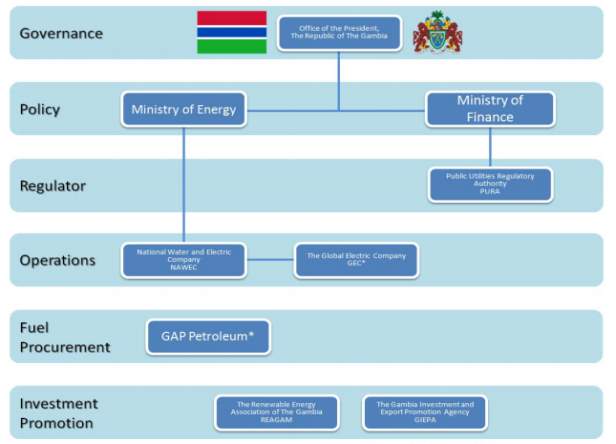
Figure 2.3- Hierarchy Structure of the Gambian Energy Sector Organization
Below is a brief description of each institution in relation to the energy sector with their individual responsibilities.
1. Office of the President, The Republic of the Gambia
The Presidents’ receives all the information for all energy objectives from all the ministries and have the final authority on regulations, tariffs and responsible for contracting any IPP for the country’s benefit. (The Gambia 2013 Population and Housing Census Preliminary Results, 2013)
2. Ministry of Energy
The entire operation of the energy sector in the Gambia is managed by the ministry of energy. NAWEC and the GEG provide recommendations on tariffs to the president and they are helped by the ministry of energy to do so. (The Gambia 2013 Population and Housing Census Preliminary Results, 2013)
3. Ministry of Finance
When it comes the energy sector, the Ministry of finance play a very important role. The Public Utilities Regulatory Authority sends the ministry recommendations, from there financial implications are evaluated and finally, the President is provided with recommendations by the ministry. (The Gambia 2013 Population and Housing Census Preliminary Results, 2013)
4. National Water and Electric Company (NAWEC)
NAWECs’ job is to operate and maintain various power stations, transmission and distribution of electricity in the country and they are also responsible to generate and collect tariffs to all customers and for private power producers in the country, NAWEC is responsible for the establishment and administration of Power Purchase Agreements (PPA). (The Gambia 2013 Population and Housing Census Preliminary Results, 2013)
5. Global Electrical Group Ltd (GEG)
The GEG as mentioned before, they were contracted by NAWEC to build, own, operate and maintain one of the two power facilities but they do not provide any infrastructure for transmission or services for power they generate, nor do they collect any tariffs from any customers. Their PPA contract is a must-run, take-or-pay with fuel price adjustments. (The Gambia 2013 Population and Housing Census Preliminary Results, 2013)
6. GAMPetrolem (GAP)
The GEGs’ partner, GAP Petroleum has its main responsibility to import, store and deliver majority of the country’s fuel supply. The three main fuel types imported into the Gambia are HFO, LFO, and LPG and GAP has facilities to store 51,000 metric tonnes which could last for approximately 6 months. (The Gambia 2013 Population and Housing Census Preliminary Results, 2013)
7. Public Utilities Regulatory Authority (PURA)
The PURA were founded by the Gambia Public Utilities Authority Act of 2001 and they are responsible for regulating the activities of the country’s public utility sectors such as electricity, water and communications. Other functions that the PURA provide are that include the promotion of fair competition between public utilities, the interest of consumers and public utilities are protected and the standard of performance by public utilities are monitored and applied. (The Gambia 2013 Population and Housing Census Preliminary Results, 2013)
1.5.2. The Energy Policy
In June 2005 the Secretary of State approved the Gambia’s Energy Policy which set out various objectives for the energy sector and is also aimed for the renewable energy sub-sector. The electricity’s sub-sector aims are that:
- The electricity supply supporting the socio-economic development is environmentally-sustainable, adequate, efficient and affordable
- The Power sector efficiencies are enhanced and the power supply reliability and security are improved
- The Power sector operations are promoted by encouraging more private sector participation in power supply. (The Gambia 2013 Population and Housing Census Preliminary Results, 2013)
With respect to electricity, the more specific development objectives are:
- To improve the reliability and quality of electricity services and cater for load growth by improving and expanding the generation, transmission and distribution capacity
- To reduce electricity costs
That investment in rural power supply and the use of efficient alternatives of fuels for electricity are encouraged (The Gambia 2013 Population and Housing Census Preliminary Results, 2013)
The Renewable Energy sub-sectors’ aim is to ensure the promotion and utilisation of renewable energy in support of sustainable development in the country. Their specific objectives are:
- The use of renewable sources of energy such as solar, wind and bio-mass is promoted
- That a domestic production capacity for renewable energy fuels and technologies is promoted as much as possible
- That through private sector participation, the supply of renewable energy device and technologies at competitive prices is sustainable (The Gambia 2013 Population and Housing Census Preliminary Results, 2013)
1.5.3. Electricity Act, 2005
In order to encourage the growth and private investment in the electricity sub-sector, the Electricity Act, 2005 was endorsed. The act was also enacted to set out different responsibilities for policy and regulation and to regulate electricity service providers. The Act introduces license and licensing procedures, tariff principles and accounting standards for the electricity sub-sector. The Acts’ objectives are:
- To make sure the generation, transmission and distribution of electricity in the Gambia is promoted and improved
- That the private sector investments activities, domestic and foreign private capital participation in the electric sector are encouraged
- To support the production of electricity from renewable sources of energy
- To increase the electricity market competition
- Creating and implementing a framework agreement for the regulating the electric sector
At fair rates, electricity supplied to the population and the economy is sufficient and reliable (The Gambia 2013 Population and Housing Census Preliminary Results, 2013)
1.6. Potential for Renewable Energy
The Gambia’s location and weather exposes the country to various sources of renewable energy giving it a high of potential in different types of sustainable and reliable sources of energy that are widely used in countries around the world such as solar, wind and tidal energy. (Singh, Alzouma Nouhou and Youba Sokona, 2013)
1.6.1. Potential of Solar Energy
The Gambia has considerable amounts of Renewable Energy resources and the one that is mostly in abundance is Solar Energy due to the long hours of sunlight that the country experiences but a critical deficiency in electrical generation and distribution efficiency, alongside a developing demand for power. According to results from Hydromed office, the country receives an average of 9 hours of sunlight everyday throughout the year despite the rainy season which usually starts in June and ends in the last weeks of October. (Kanteh Sakiliba et al., 2015) The long hours of sunlight show how much potential there is for Solar Energy in the country. Another factor that emphasises this good potential is that the Gambia receives a staggering
5.7kWh/m2/day of solar radiation in urban areas whilst rural areas receive
5.1kWh/m2/day. (Sanneh and Hu, 2009)
After looking at results from Hydromed, Gambian Bureau of Statistics and the geography of Banjul (Capital city) it will be the chosen city for this project because it has the fewest number of households and has the least population amongst the main cities. Even though there is a quite a few households, there is lots of activity during the day as many businesses, banks, the country’s only, schools and the biggest health centre in the Gambia is located there.
Right now there are no Solar energy providers to the public living in busier cities, just private companies and people buying and installing Stand-alone Solar PV Systems (SSPVS) for their own uses only such as electrification, water heating and water pumping but recently the University of Strathclyde conducted a charitable Gambia Solar Project which has powered up two health clinics and eight schools. Therefore, for the scale of the Gambia, it would be most suitable to build a PV power station. (Remote Monitoring of Off-Grid Renewable Energy Case Studies in rural Malawi, Zambia, and Gambia, 2013)
In the Gambia, the recognition for the urgent need to use solar energy is growing rapidly and as a result, the technical exploitation for the potential of solar energy is expanding at a significant rate. In regards to this rapid growth, a demand for better educated experts with good foundation knowledge on the solar light conversions in aspects of principles and limitations with technical abilities to apply innovative concepts and solutions in the design and realization of solar energy technologies is growing.
Solar energy technologies are divided into two main categories:
- Solar Photovoltaics
- Solar thermal energy
The basic difference between the two is that Solar Photovoltaics uses radiation from the sunlight and converts it to DC voltage which is transformed to AC voltage through an inverter and Solar thermal energy is harnessing heat emitted by the sunlight to heat up a liquid or gas to power up a turbine of a generator to produce energy on a large scale. Engineers, professors and other experts around the world argue about which of the two systems is better in terms of cost and power efficiency for both small-scale and large-scale applications.
2.6.1.1 Solar Photovoltaic Vs. Solar Thermal Energy
2.6.1.2. Solar Photovoltaic (PV)
The most direct way to convert solar radiation into electricity is with the use of Photovoltaics. It is a technology that uses radiation from the sunlight to produce electricity and not heat with the use of Solar panels which can also be called modules. PV cells are made up of a thin piece of glass and right underneath it, a positive and negative film of silicon is placed. As the radiation land on the PV cells they energise electrons in proportion to the intensity and wavelength distribution of the light. In simple terms, the radiation shoves the electrons off the silicon. This creates a potential difference across the cell which causes the free negative electrons to be attracted to one side of the silicon cell. These attracted cells create a dc voltage which is collected and channelled by wires that are in series to form an array. These cables are then combined in a combiner box(controller) which is made up of fuses designed to protect individual module cables. The DC voltage is then fed into an inverter before it is passed to transformer for transmission or to get used up directly (H. Bauer, 2015). Below is a simple diagram of how PV work:
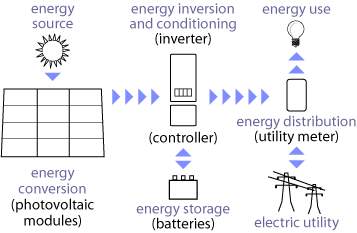
Figure 2.4- Components of a typical PV system
Solar Direct, 2016
Every module is made up of a various number of cells that are connected in either series or parallel in order to yield higher voltages, currents and power. The connection of the cells can be considered as PV cell circuits that are sealed in and laminated for protection with each cell producing approximately ½ a voltage. The modules are important PV building blocks of the system and have a similarly connected together like the cells, in series for a desired voltage. After that, the modules are then enclosed between glass and a tough metal or fibre glass back for protection which are then fastened together by a stainless steel frame. To form the array/panel, the modules also have a similar connection to previous components and that is a series or parallel connection to raise the voltage and current and thereby achieving the desired characteristics to match the load demand. The diagram below shows a representation of the description above:
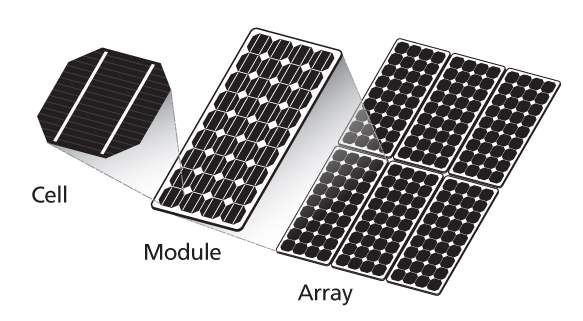
Figure 2.5- Breakdown of PV panel
SamlexSolar, 2017
2.6.1.3. Materials
Generally, all PV cells use silicon as a base material in forms of mono-crystalline or multi-crystalline cells but of recent it is being used in amorphous form. Mono-crystalline cell modules recorded efficiency levels between 15% to 18% while Multi-crystalline cell modules have an efficiency maximum of 15% and amorphous silicon modules had lower efficiency levels between 10-12%.
Electricity generated by Photovoltaics can light up many house appliances that used on a day-to-day basis such as television, lights, water pumps for both irrigation and drinking, chargers etc. with ease at a lower cost than that provided by NAWEC.
2.6.2. Temperature effects on Photovoltaic System efficiencies
For a while now, solar energy has been converted to other energy sources such as electricity and heat which is used in outer space and on earth. Solar energy powers almost all electrical devices in space but on earth, but on earth, this energy is used for heating, powering home appliances, water pumping and many other applications which will be discussed later in this text. (Molki, 2011)
Electricity generation from photovoltaic cells is affected by various factors. In the Gambia for example, the weather can sometimes be very dry with a lot of dust in the atmosphere. The dust affects the electricity generation by dimming the light reaching the PV cells by accumulating on the cells. Another factor that can affect the generation of electricity from the sun is weather conditions such as clouds which also decrease the amount of energy absorbed by the PV cells. (Molki, 2011)
In addition to that, another very important factor negatively affecting the electrical power output of PV cells is high temperatures. When it comes to micro-grids of PV cells, temperature effects do not have much of an effect on the generation efficiencies but this is noticeable when it comes to large-scale solar plants. This puts countries with abundant solar energy but happen to be located in very hot climates at a disadvantage. Countries such as Abu Dhabi and United Arab Emirates fall in this category and can have the surface of the PV panels record high temperatures of 80 °C during summer periods. (Molki, 2011)
2.6.2.1. How are Photovoltaic Cells affected by temperature?
Photovoltaic cells are tested at Standard Test Conditions (STC) which at 25°C and heat can reduce output efficiency by 10-20% depending on the installed location. When the solar panels’ temperature rises, its output current also increases exponentially but its output voltage falls linearly. In other words, heat can reduce the power production of solar panels’ severely and there are various ways to deal with issue, one of them being determining heat tolerance of the panel. The way to do this is looking at the manufacturers’ data sheet and identifying maximum power temperature coefficient which is labelled as “temperature coefficient (Pmax)” and the Maximum Power Voltage (Vmax or Vmp). This tells how much power is lost per 1°C when temperature rises above the Standard Test Conditions. Usually for every 1°C rise above the STC, the Pmax and Vmp is decreased by 0.485-0.5%. Therefore, referring back to the case in Abu Dhabi, losses would be a lot. (Waco, 2011)
But there are a few ways to decrease these effects of really high temperatures and they are:
- When the panels are installed they should be placed a few inches above the roof to allow free flow of air from their top and bottom
- Possible addition of ventilation system to assist the ventilation
- Installing panels where they could experience natural ventilation
2.6.3. Practical Photovoltaic System Applications
One of the main practical applications for Photovoltaic systems is PV lighting. PV lighting is very important in developing countries as power cuts are very frequent and the alternative to lights for homes and small companies that cannot afford a generator is kerosene lamps or candles which can be sometimes dangerous as there were a few cases in the Gambia where a few houses across the countries where completely burned down because of candles and apart from the fact that they can be dangerous, they also provide dim light(DISSEMINATION OF PHOTOVOLTAICS IN THE GAMBIA, 1995). According U. Able-Thomas, April 1995, the Life Cycle Cost(LCC) of PV lighting and Kerosene lamps are £800 and £2380 respectively and the Annual Life Cycle Cost(ALCC) for both systems are approximately £30 and £90 respectively. This shows that PV lighting is much cheaper than Kerosene lamps. In addition to cost, PV lights are much more reliable, safe and produce better lighting quality making it much more appealing to use. (DISSEMINATION OF PHOTOVOLTAICS IN THE GAMBIA, 1995)
Photovoltaic systems are much more than lighting house appliances. They have other practical applications which could be very useful-especially for the Gambia- for agriculture and that is water pumping (DISSEMINATION OF PHOTOVOLTAICS IN THE GAMBIA, 1995). In third-world countries such as the Gambia a lot of water used for agriculture comes from wells which are very deep. What photovoltaic water pumping offers is that it powers pumps for irrigation of crops and drinking water. PV panels can make this water from wells consumable by powering a purification system to clean the water and get rid of harmful bacteria. Impure water consumption is a very crucial factor for illness and infant mortality in developing countries. Therefore, providing pure and clean water could be a social benefit. When water pumps are not used, excess power can be stored in batteries for later use, maybe when the sun sets. (DISSEMINATION OF PHOTOVOLTAICS IN THE GAMBIA, 1995)
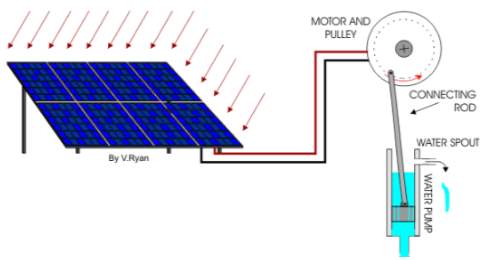
Figure 2.6- Simple representation of a water pump operated by PV panel
(PRACTICAL APPLICATIONS OF PHOTOVOLTAICS? 2009)
Another practical use for Photovoltaic systems is for telecommunications such as phone boxes and telephone network towers which require very little power (DISSEMINATION OF PHOTOVOLTAICS IN THE GAMBIA, 1995). Phone boxes could ideal in remote areas where electricity cuts are very frequent or there is not electricity at all. This system has been tested in a few developing countries and have shown great success. In addition, in the Gambia, many telecommunication towers in rural areas are powered by Photovoltaics which have turned out to be working just fine. (PRACTICAL APPLICATIONS OF PHOTOVOLTAICS? 2009)
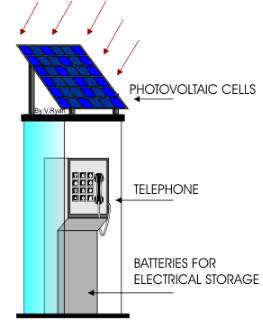
Figure 2.7- Simple representation of a PV powered phone box
(PRACTICAL APPLICATIONS OF PHOTOVOLTAICS? 2009)
2.6.4. Solar Thermal Energy Systems
Solar Thermal Energy systems differs from Photovoltaics in converting energy from sunlight to electricity. The way Solar Thermal Energy systems usually work is that it collects and concentrates sunlight onto a desired spot, usually called the focal point. At this point an object is placed to absorb all the sunlight and is called the receiver. This concentrated sunlight heats up the receiver and produces high temperatures to generate electricity. The medium used to concentrate the sunlight onto the receiver is the reflector which could be mirrors in most cases. Inside the receiver there is a heat-transfer fluid which is used to produce steam when heated. The steam produced then goes through a turbine to produce mechanical energy to power up a generator for electricity production. (Ernst & Young and Fraunhofer, 2011)
Since the earth is rotating and the sun does not have a fixed position, trackers are installed in this system to keep the sunlight focused onto the receiver throughout the day. (Ernst & Young and Fraunhofer, 2011)
Some Solar Thermal Energy systems have a thermal energy storage system which stores heat throughout the day to produce electricity at night when the sun sets or when it is cloudy. If enough heat is stored, this system can work 24/7. (Ernst & Young and Fraunhofer, 2011)
Solar Thermal Energy systems have three main categories and they are:
- Linear concentrating systems: use curved rectangular shaped reflectors to concentrate sunlight onto a pipe running across their length. This is the receiver and contains the heat exchange fluid which is usually molten salt. This fluid is sent to a heat exchanger to boil water in a conventional steam-turbine to produce electricity. (Ernst & Young and Fraunhofer, 2011)
- Solar Power Towers: uses a large flat land with many sun-tracking mirrors to reflect sunlight onto a receiver at the top of the tower which is usually situated at the centre of these mirrors and from there the same concept applies by heating the heat-exchange fluid producing electricity from steam. With this system, sunlight can be concentrated more than 1200 times. (Ernst & Young and Fraunhofer, 2011)
- Solar dish systems: is the least common system of the three. It uses a large mirrored satellite looking dish which concentrates sunlight onto the thermal receiver which is at the focal point to receive, absorb and collect all of the sunlight to transfer it to an engine generator. Usually the type of heat engine used for this system is the Stirling engine which uses heated fluid to move pistons and create mechanical power which runs either a generator or alternator to produce electricity. (Ernst & Young and Fraunhofer, 2011)
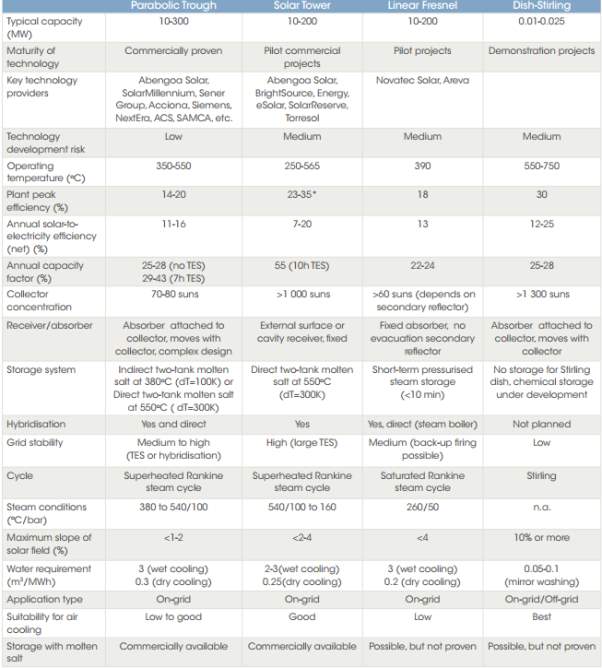
Table 2.4- Comparison of different CSP technologies
(Ernst & Young and Fraunhofer, 2011)
In conclusion, after doing this comparison it is observed that Photovoltaics would be a better choice for this project as it is focused on a community only as it is a small scale project and concentrated solar thermal energy systems would be more suitable to use on a larger scale as it requires a large space of open land. According to a report the breakdown of investment cost into a 50 MW concentrated solar thermal energy would be roughly £290m ($364) which is really expensive for a government like that of the Gambia (Ernst & Young and Fraunhofer, 2011) and this amount of money is far from close to the initial capital cost set for this project in particular which will be discussed in chapters 4 and 5. (Musunuri, Sánchez and Rodriguez, 2007)
2.6.5. Current Solar Projects
Of recent, Akon, an American singer with Senegalese origins founded a £800m ($1b) project to solve the energy crisis in Africa by providing electricity to more than 500 million Africans who did not have access to any of it. This project was called “Akon Lighting Africa” that included 15 countries and Gambia being one of them. So far, 100,000 solar street lamps and 1,200 solar micro-grids have been installed in various countries creating 5,500 indirect jobs.
On the 4th and 5th of March the high-profile international musician made an official visit to the Gambia to meet the newly elected president Adama Barrow to launch the new project in a village called Sare Pateh Jamwelly that would benefit 4000 villagers. This village was lit up after experiencing a blackout for more than 60 days. This organisations’ first project in the Gambia was the donation of solar equipment to the government that had an estimated worth of £89,000 (5m Gambian Dalasis) which consisted of 20 solar street lights, water filtering systems and solar systems for a school, health centre and a mosque. This project provides about 1000 indirect jobs in the Gambia alone. (Observer newspaper, the Gambia 2017)
1.7. Potential of Wind Energy
The location of the Gambia does not just make it exposed to abundance of sunlight but fairly high wind speeds too depending on the time of the year. The country’s location enables it to experience sea breeze and land breeze.
In the Gambia there is a lot of open land that has not been developed yet meaning there are more than enough remote locations to place wind turbines where found suitable. Since one of the main incomes of the Gambia is from tourism, it should be taken into consideration because many tourists come to the Gambia for bird watching to see very rare species of birds. Wind turbines can cause a threat to these birds and other wildlife animals. In addition to threat to birds, they create so much noise to people that live in residential areas but this is not a problem in the Gambia because of the sparsely populated land and lots of remote locations.
According to data retrieved from Hydromed, the area that experiences the windiest days is Yundum. The highest wind speeds recorded in this location was between 12-19 Knots which is equivalent to approximately 6.2- 9.8 m/s respectively. On very rare days, high wind speed recorded was between 36-55 Knots (18.5-28.1 m/s).
Wind Turbines usually start operating and generating power at 3 to 4 m/s. This is called the cut-in speed. Then, the higher the wind speed gets the higher the power generated but when wind speeds get between 12 and 17 m/s the wind turbine reaches its limit of producing higher power. Meaning a higher wind speed will not produce power more than what the turbine is capable of. This is the rated power output. Finally, in very rare occasions for the Gambia, when the wind speeds exceed 25m/s the turbine activates a braking system for it to shut down and stop producing anymore power as such high wind speeds can break the blades. This is known as the cut-out speed. Therefore, looking at the results obtained and compared to the power curve of wind turbines, it is observed that wind turbines in this area in Gambia qualifies to be implemented.
Wind Energy is feasible in the Gambia due to wind speeds high enough to power up small communities, towns and even cities around the country depending on the size of the turbines used. Although wind turbines pose all these disadvantages, there is always a solution to these problems in the Gambia because of the open land as mentioned before but this can be a problem as the country develops with houses and buildings coming up in near locations in the future.
1.8. Potential of Tidal Energy
The Gambia faces the Atlantic Ocean from its west and has a coast that is about 80km long which makes the feasibility of tidal energy questionable as the country depends a lot on fishing as a good source of income, Tidal energy would be a very bad choice as this can prevent many fishermen of going into sea or these can even drive the fish away. Apart from that many people have several boats and yachts that they can sometimes rent to tourists and other people to organise private boat trips for leisure activities such as swimming, fishing and birdwatching. Trying to introduce tidal energy might not only make destroy the habitat of these birds and fish but also can make people see it as dangerous to get close to the tidal energy system.
In addition to that, generating power from tidal energy is not feasible as tidal ranges for dams should be between 4.5m-12.4m and the river Gambia’s tide does not within this range because at high tides the river depth is at about 5.7m and 7m on rare occasions and when tides are low the depth drops down to 3m. Therefore, investing in tidal dams will be a failure. However, a regional energy project was proposed to build a dam on the river in southern Senegal by an organisation for the river Gambia exploitation called the “Organisastion de Mise en Valeur du Fleuve Gambie” (2015). The power produced would then be shared by all member countries which include Guinea Conakry, Guinea Bissau, Senegal and the Gambia, through high voltage transmission but the implementation of the project has been delayed for more than 30 years due to rising costs and sensitive political environments. (The Gambia Sustainable Energy for All Rapid Assessment and Gap Analysis, 2012) Probably in the near future if these problems are resolved, the project will be implemented.
On the other hand, installing underwater turbines could be a huge success as tides around the coast of the Gambia have a high volumetric flow rate but these turbines can create noise which can drive the fish away which is a high income for the country as sailors in the country export the fish they catch to other countries in the world and also fishing might be prohibited as nets of fishermen can get stuck and jam the underwater turbines.
Chapter 3: Methods, Design and Implementation
Chapters 1 & 2 focused on introducing this project, effects of renewable energy on both the economy and environment, average household energy consumption per day and they also explained brief potential of different types of renewable energy sources in the Gambia. Since this project focuses mostly on solar energy because its source is in abundance in the Gambia, chapter 2 went into more details on solar energy and compared the two main ways of harnessing energy from solar and they are Photovoltaics and Solar thermal power. This project is aimed at making a community in the Gambia more self-sufficient, therefore Photovoltaics was thought to be most suitable.
This chapter will focus on the methodology, different installation possibilities and the implementation of photovoltaics into the community.
3.1. Methodology
For the methodology to see whether this project is feasible or not, a software called HOMERpro was installed and used. What this software does is that it allows the user to design a project using schematics for electricity generation. The main use of this software is to design hybrid systems of renewable energy alongside non-renewables but it can also be used to design desired systems of only renewable sources.
Before beginning to design any system with HOMERpro, users are supposed to enter the location of the project for accurate results. When designing a schematic for a PV system for example, HOMERpro can download accurate data of Solar GHI and DNI and temperatures from either the National Renewable Energy Lab or NASA Surface meteorology and Solar Energy for the specific location of the project to analyse accurately analyse how much power is generated under certain conditions. It can also download wind speeds, Hydrokinetic, Hydro and biomass as resources for those locations.
After these systems are designed on the software, a calculate button collects all the data and runs it to give results and shows whether each project is feasible, shows the yearly expenses and revenue, excess energy produced and more information that could be relevant for evaluation. Here is an example of a simple PV system with 2 loads installed, a converter and storage battery:
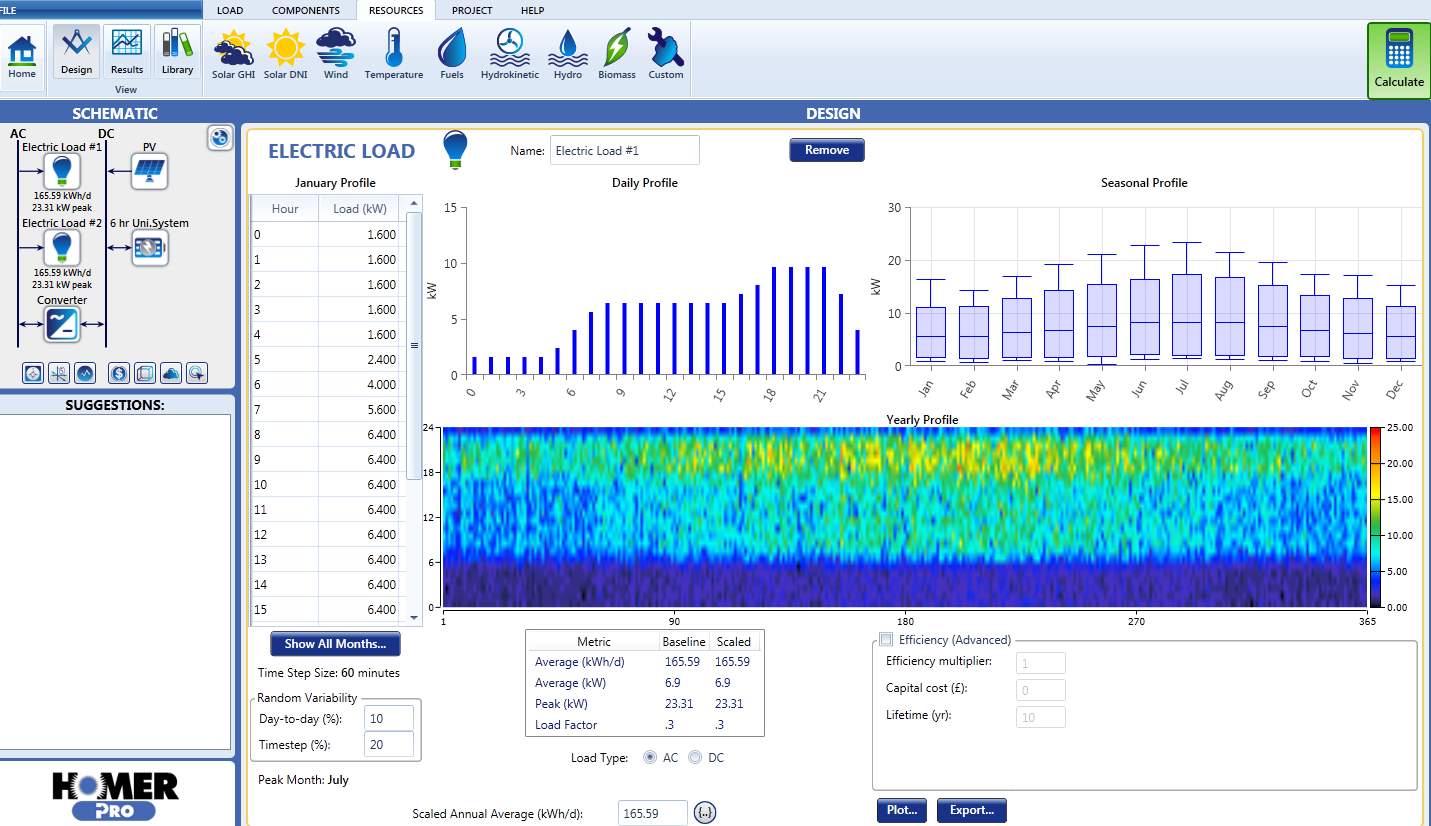
Figure 3.1- Screenshot of a simple designed system on HOMERpro
3.2. Design and Implementation
For the design of this project various factors should be considered. For example, whether the solar panels would have a fixed position, or will they be adjustable from time to time, or would they have an automatic tracking system in order to harness the most of the solar radiation. Another factor that should be considered is shading. As known, shading affects the performance of solar panels, therefore they should be arranged away from each other at distances whereby they do not block each other when the sun changes its position.
3.2.1. Fixed or Adjustable?
Solar panels can harness more energy over the year by adjusting their tilt according to season than just leaving them at a fixed tilt because in the summer, the sun is higher and in the winter it is lower. Mounting the solar panels at a fixed tilt could be an easier way out to all of this but on large scale, this is not the best option because so much energy goes unused. The table below briefly shows the effects of adjusting the tilt angle of solar panels using 40° latitudes but this comparison differs for different locations. (Landau, 2015)
| Fixed | Adjust 2 Seasons | Adjust 4 Seasons | 2-axis tracker | |
| % of optimum power produced | 71.1% | 75.2% | 75.7% | 100% |
Table 3.1- Comparison of Optimum percentages of power produced from tracking or fixed PV panels
As far as this project is concerned, the panels that are to be used will be installed at a fixed angle because on a small scale project for a community the power loss would be small and therefore neglected. (Landau, 2015)
3.3. Implementation
The aim of this project was to be able to make a community in the Gambia more self-sufficient and the main point of concentration for this project was to use and experiment in solar energy in the Gambia and see whether or not implementing solar energy in the country would be feasible.
The community chosen for this project is situated in the capital of the Gambia, Banjul, where it is moderately busy with activities taking place almost on a daily basis. The community chosen would be consisted of 10 houses, 5 of which are considered to be luxurious meaning their electricity consumption is higher than others and the other 5 houses would be considered as the average household in the country. Another part of the community included in the experimental work of this project is a small clinic and a primary school who have moderate electricity consumption during day.
As mentioned above in the methodology, the software HOMERpro was used to do simulations for this project. First of all, upon opening the HOMERpro, the location of Banjul was entered (13.45° N, 16.57° W) then a “Resources” button was clicked that provides information on Solar, Temperatures and Wind which are downloaded from the National Renewable Energy Lab or NASA as mentioned earlier. Soon after that, a schematic for this project was being designed and developed. HOMERpro trial version only allows users to add a maximum of 3 loads and that was used. Each load had its own category with “Electric Load #1” being the 5 luxurious houses, “Electric Load #2” being the other 5 average households and finally, “Deferrable Load” (Appendix 1) being considered as the school and community clinic. After that, load profile for “Electric Load#1” was modified to higher kWh/d for every month making this load rack up a 276 kWh/d. A similar process was applied to “Electric Load#2” but the load was modified to be a bit lower to be 165.29 kWh/d. The “Deferrable Load” was assumed to be at an average constant 10 kWh/d for the whole year.
Next came adding the power source which was Photovoltaics. For this, 2 “Generic flat plate PV” (Appendix 2) was used. The reason for using 2 PVs will be explained further in the report. The Generic flat used a search space tab has a list of sizes of PVs the user might consider in optimisation and design. For this project, the solar panels were sized in steps of 50 kW until a Rated capacity of 400 kW was achieved. HOMERpro simulates all of the combinations of the sizes in the search space across all components. Having a wide range in the search space means more data is produced after calculation giving the user a many system combinations to choose from. In addition to that, the “consider temperature effects?” box was ticked for more accurate results. Another feature of these panels was that they were connected to the DC busbar which meant a Converter was needed to convert the DC power produced into AC. The converter also has a search space tab for different capacities but the these were sized in steps of 25 kW and a converter capacity of 250 kW was achieved.
At this point, HOMERpro could go on with simulations but instead, it provides the user with a suggestion of adding storage to the system. Therefore, a storage system called “UET Uni.System 500 kW 4 hrs” was added with a battery quantity of 3 was added and each battery has a nominal capacity of 595 kWh. The energy storage system can operate at 600 kW AC for 2 hours or output net of 2200 kWh over an 8-hour discharge with an efficiency of 97% (HOMERpro)
So far, this was the layout of the project without it being connected to the grid. HOMERpro also allows the user to install a grid that could be similar to the that in the country of choice. After the grid was added to the AC busbar, it was made as realistic as possible by making its capacity 85 MW (85000 kW) with accurate rates obtained from the NAWEC (Appendix 3 & 4). Electricity price was set at £0.17/kWh and a Sellback price of £0.1/kWh was chosen for when power is being sold back into the grid. The grid was also assumed to be 100% reliable without any power cuts and emissions were left at default values.
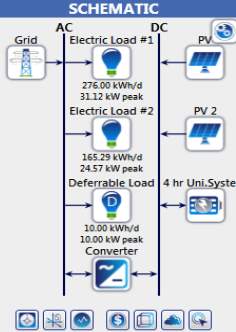
Figure 3.2- Schematic of the chosen system
3.4. Installation Possibilities
There are various ways where PV systems can be installed to be used in order to produce power. One way would be as a stand-alone PV panel but adding a few more panels and different loads without connecting to the national grid would make it a micro-grid i.e. a grid on its own. If this PV system is connected to the grid and the different loads use power produced form the grid, the system would be called a hybrid system but hybrid system does not necessarily need to be connected to the grid to be called so. It is called a hybrid system when power is produced from various sources of energy. For example, adding a wind source of energy to this system without connecting to the grid makes the micro-grid a hybrid system on its own.
Chapter 4: Results
Chapter 3 focused on introducing the designated system but this chapter will focus on the Testing, results and evaluation. After this power generating system is designed the “calculate” button was hit and HOMERpro ran through 12,000 simulations of different system combinations. This large number of simulation is due to the number of PV panels used, the grid, converter, different loads and their capacities that were set in the search space tab.
After all simulations were run, the software filters out the infeasible systems and leaves the feasible ones and the best options to use. In addition to that, HOMERpro also tells the user why the other systems are not feasible. The results simulated produce a report that includes the Cost Of Energy which is, how much does it cost to generate 1 kWh of useful electricity. The report also includes useful information such as operating cost, capital cost and so many other features. The screenshot below shows what the results window looks like:
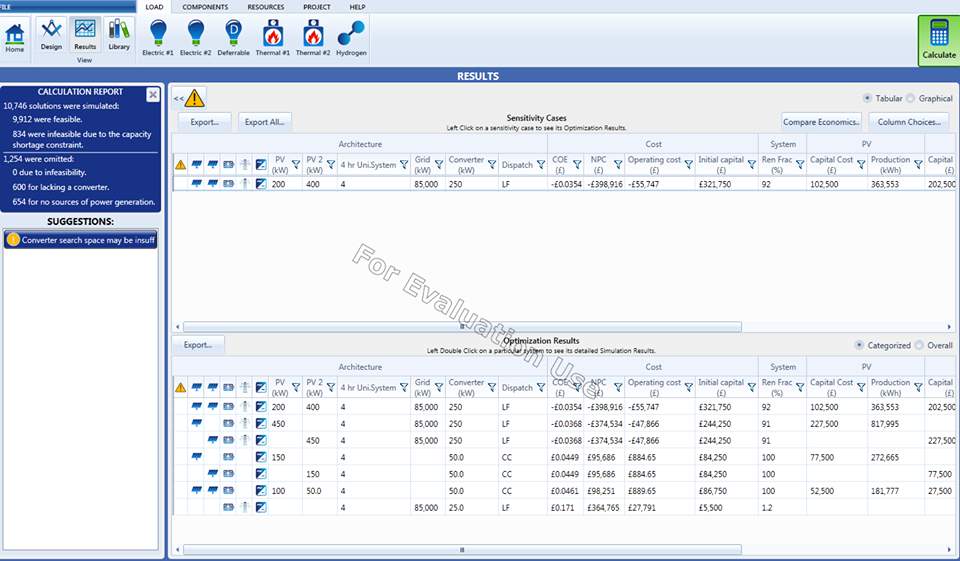
Figure 4.1- Simulation results of various system possibilities
When the results come out, we are only interested in the Optimization Results which is the bottom table. For this project, we are solely interested on power generated by both PV panels and batteries alone without considering what the grid provides. Therefore, the sixth system would be what we are looking for exactly. As a system, it seems to be perfectly fine as all values such as operating cost is in the positive region. Operating Costs is usually the expenditures related with the maintenance and management of the chosen system on a day-to-day basis. Having a negative operating cost would mean that the system set up would end up in loses like the first 3 systems shown in the same table.
Looking at the sixth option, HOMERpro shows us that it has selected the combination of having the first PV panel at a capacity of 100 kW and the second one to be at 50 kW with a converter capacity of 50 kW. The Levelized Cost Of Electricity (LCOE) is defined as the unit cost of producing useful power over the lifetime of a certain project. In this system, the cost to produce 1 kW of useful electricity would be £0.0461 meaning if we were to have any excess electricity, it could be sold back to the grid at the rate of at least £0.1 ensuring about a 100% profit. It also shows a Net Present Cost (NPC) which is also known as the Total Cost of Ownership (TCO). This is an estimated value that helps the system owners calculate the direct and indirect costs of their system.
In order to go deeper into details about the preferred system, we could double click the system and a “Simulation Result” window will pop up showing the cost summary, cash flow, economics and power produced information. Below are the different tabs with a brief explanation on the important information in each.
4.1. Simulation Results
First we have the “Cost Summary”. In this tab we can see that it lists every important component for this model and the first column after the name shows the capital in British GBP (£). This is how much each component will cost and right next to it are the replacement costs for these components and then comes the Operating & Maintenance cost which shows how much it would cosy to operate and maintain this system.
A few objectives that were set to achieve in this project using this software were to:
- Design a system with an initial Capital Cost less than £100,000 and a Total System Cost less than £150,000.
- Achieve a COE less than £0.1 and an Operating cost less than £1000
- Achieve a Simple Payback less than 5 years
Finally, we have a sum of £98,251.01 for the “Total”. This tells how much money is needed to set up the whole system and get it running. As other windows are opened as shown below, we see that this particular system matches all the system objectives set at the beginning before using HOMERpro.
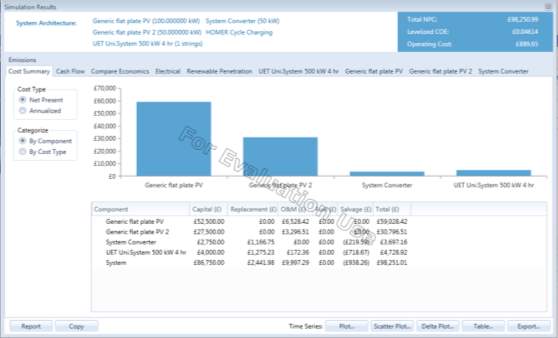
Figure 4.2- Cost Summary of the chosen system
In the window shown below, we have the “Compare Economics” tab. That compares the “Base System” which is a system that only delivers power from the grid only which is assumed to represent the current system set up by NAWEC and the “Current System” is a stand-alone system that was designed to serve the its main purpose which is to make a community more self-sufficient. The second table below in this tab shows really important information about the “Return on Investment (%)” and the “Simple paybacK” whhich is what interests all investors that will want to invest in this project. For such as system to have a Payback of 3 years shows how it can easily be successful and has the potential to expand really quick by adding a few more houses to the community and increasing the production capacity. Finally, the “salvage” value is looked at but it is often neglected as it is the estimated value of an asset being resold to the owner after its lifetime.
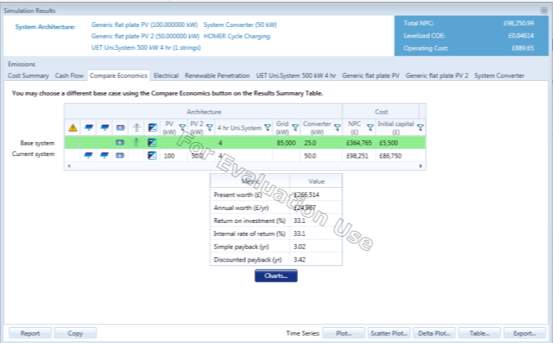
Figure 4.3- Economic comparison of chosen system and Base system
The third window displays the “Electrical” tab which summarises the operation of the system by showing the contribution of different components to the total energy production and also shows the excess energy that is produced and is not used. This excess electricity could effectively be sold back to the grid and contribute to bringing down the years of Payback.Here we see that this system produces 272,665 kWh per year and are divided in the ratio of 66.67:33.33 between Generic flat plate PV and PV2 respectively. From the power produced, a total of 161,710 kWh is consumed per year leaving an excess of 70,609.4 kWh/yr. This unused electricity could be sold back to the grid at a really cheap price of £0.1 per kWh/yr, meaning if we were to sell all the excess electricity produced at that rate, a total extra revenue of £7,060.94 (70609.4kWh/yr x £0.1 per kWh/yr) would be made every year.
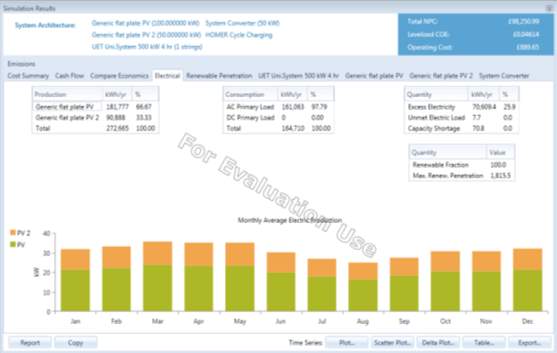
Figure 4.4- Electrical production and consumption of the power producing components
Chapter 5: Discussion
5.1. Scope of Chapter
In this chapter primary and secondary data findings in the Literature review will be discussed. The data primary data was obtained through informal phone interviews with a few senior bodies working within the power sector in the Gambia, the writers of a few of the journals read before beginning this study and a few locals in the country. Data discussion will greatly aid the research to realise the urgent need for renewable energy.
5.2. Literature Review findings summary
Before starting this study, the electrical situation in the Gambia was observed and well examined. After observation, research and examination was done on the various current power producing systems in Africa and Gambia specifically, it was quite noticeable that change was really needed because in the case of NAWEC, they highly depend on diesel engines to power up the country without investing into renewables but this change does not necessarily have to big and immediate to change the whole current power system as this can create problems in some countries like Gambia with a fragile economy. This should be rather started as a small scale project before expanding to be large scale. In addition to that, quite a large population of the Gambia did not have access to electricity which is unreliable to those who have access to it.
The main aims that were set for this project were to find ways to make sure the country cuts down on spending large amounts of money into diesel imports. Another reason was to be able to provide electricity to those who did not have access to it at all and also make it reliable. For this reason, it was found most suitable to start off with Solar energy as the Gambia is well exposed to this source.
Another very important aim of this project was to provide clean energy to the population and trying to reduce carbon emissions into the atmosphere. Providing energy from renewables ensured that there would be little or no carbon emissions into the system at all. Looking at the “Grid” provided by HOMERpro, we could see that there is an emission of 632g/kWh of Carbon Dioxide, 2.74g/kWh of Sulfur Dioxide and 1.34g/kWh of Nitrogen Oxides which are all harmful to the environment contributing to global warming. Implementing the system designed would mean that the “Grid” is not used ensuring no Carbon was emitted by the system making it eco-friendly.
Not having access to a reliable power source plays an important role in the socio-economic development of the third-world countries. However, this dissertation focuses on the west African region; specifically, the Gambia. Current electricity shortage status is due of little investment in renewable energy technologies. As a result, the country’s foreign exchange is used up to import diesel which could limit the country’s development.
The Literature Review also focused in detail about the potential of Solar energy in the country, exploring the two main ways of generating power from the sun (PV and Solar Thermal) and focused more on PV as it was the chosen one for a community and this spoke about temperature effects on PV power generation and different PV applications. Another finding was the potential for wind in the Gambia as there are some areas in the country that experience moderate wind speeds making wind turbine installation feasible and this has seen a few private companies install three turbines. It has also discussed about the potential of Tidal energy and why it is not an ideal choice for the country.
5.3. Survey
Informal interviews were set up with a few officials that work and had worked with NAWEC and also a few that worked in the old Government as there was a change of president in the Gambia to find out how urgent a change in the current power producing system in the Gambia was needed by the people. This was done by informal phone interviews with people in the country. Questions were also asked about the amount of fuel imported every year into the country and these matched the figures found in articles/journals written but the prices were a confidential to the government only. However, estimates for the prices were found in other reliable journals for the prices.
5.3.1. Phone call Interviews
These phone call interviews were conducted from Glasgow with five people in the Gambia that the author is in contact with. It was made sure that these people did not know each other and also that they lived in different areas so that their answers are not influenced by any factor. The questions asked and responses are as follows:
Question 1 – What do you think of the current electrical situation in the country?
Three out of five people were not happy with the current situation and stated that they experience power cuts for long hours and also mentioned that they have relatives that do not have any access to electricity while one did not really mind and was just satisfied with it. But just one person was happy with it stating power cuts in the area they live in are very low but when that happens, they have stand-alone generators to power their homes. This shows that people in the country do not have access to reliable electricity and to all those who have it, do not get it reliably which is mentioned in the Literature review
Question 2 – Do you think anything should be done about it?
All five respondents said that a solution to this problem should be found as soon as possible and they all stated that it was time to invest into renewable energy without even asking the question. Even the respondent that was happy with the current system was asking for a change as fuel prices for his stand-alone generator was rising. This shows that the people of the Gambia are aware of these technologies and it is up to the government to start.
Question 3 – What Renewable Energy source and technology do you think would be most suitable?
Again, all respondents replied with the obvious answer and that was the sun. They all mentioned the same thing that the country has an abundance of sunlight that could generate enough power. But when asked about the technology, only two people able to provide an answer as the other three thought there is only one way of generating power from the sun. These two people mentioned the two main solar technologies and both stated that for small scale power production, PVs would be more suitable while differing on the opinion for large-scale power production.
Question 4 – Do you think that this change is happening soon and if it does, will it help?
A furious response was given by three respondents saying that the government always says that the problem is going to be solved soon but every year “it’s the same story”. The same response was also given by the other two but in a calmer manner. All five respondents said that if the change happens, factories can work with less downtime and boost growth.
5.4. Previous Simulations
When doing the simulations to obtain the most suitable thought systems some difficulties were faced. The system above was not chosen after the first batch of 12,000 simulations were done as certain objectives were not met, some systems simulated had negative operating costs others had an expensive COE of at least £0.2 per kW and other various factors which led to those systems not being picked.
In the early stages of using the software HOMERpro, a simple schematic diagram was made with only one “Generic Flat plate PV” with only one electrical load and the grid was not yet connected. At this point, the software went through 540 simulations and produced outstanding results that met all the objectives but the thing about this system was that it only considered one load accounting for the 5 average households in that community. (Appendix 6)
After that when the load profile for the “Electrical Load 1” was increased to 276 kWh/d, only 1 feasible result for this system was produced with a Levelized COE of £0.0654, a total capital cost of £136,465 and excess electricity of 89,482.9kWh/yr which was alright so far but the Simple payback was at 19.04 years which was pushed me to go further into trying to reduce that to less than 5 years. (Appendix 5,7 & 8)
In later stages more loads were accounted for and the search space of the PV panels, converters and other components were increased bit by bit but still the final simulation did not meet the requirements as either one or two of the objectives were not met. On some occasions, a system error would show up when the power to be consumed was almost twice as high as the power produced. Here, the sensible way solve this problem was to make the power produced be equal to or greater than the demand and that was done by adding another “Generic Flat plate PV” which easily bumped up the amount of power produced by the system making the it more than the demand. When this was done some unwanted results were still produced but with the modification of a few parameters for the various components getting the desired system was within reach
Finally, when the desired system was established, the grid was added to perform economical comparison for when the system is connected to the national grid as a hybrid system and when the system designed is stand-alone micro-grid. This was done by a function in the “grid” load profile that could show simulations of systems with and without the grid connected. After simulating this schematic, there was success and the final model was chosen which is explained earlier in this chapter.
Chapter 6: Conclusion and Further work
6.1. Introduction
The aim of this chapter is to provide the conclusion of the study with further work that could be done to add something new to the system. The aim of the dissertation from the beginning was to identify ways to make a community in the Gambia more self-sufficient with potential of expanding and making major cities more self-sufficient by making greater use of renewable energy. The previous chapters spoke about ways this could be done by renewable energy use in the Gambia with brief cost analysis.
6.2. Research objectives
The dissertation aims could be met if implemented due to the following of initial project objectives were set in an Interim Report and the three main ones are as follows:
- Investigate about the different main cities in the Gambia for the project and choose the most suitable – The reason this objective was set was due to the reason that every city in the Gambia has its own population with its own businesses and activities. Banjul was the chosen city to pick the community from because for the main reason that it is the capital of the country with a few factories and a port which suggested a bit of activity and that was the business centre of the country but is facing a decline in population and businesses. Another reason why it was chosen was because it is moderately windy in Banjul which easily opened a door for expansion of the project if it is a success.
- Investigate the feasibility of introducing renewable energy into the chosen city- Research on this was done by looking at the potential of different renewable energy sources and technologies in the Gambia. Also research and investigation was conducted on current renewable energy and the laws for introducing this project to see if there was any unknown factor that would prevent this project from moving forward. It was found that the potential for solar and wind was really high while the laws for electricity explained in Literature Review encouraged the purpose of this project.
- Analyse ways to reduce spending on fuel imports by producing electricity from renewables- Reports stated that about 16% of the Gambia’s money is spent on fuel imports and a way to reduce this was the obvious way, to generate power from a “free” source of energy to be able to spend less of diesel.
6.3. Conclusion
In conclusion, data was retrieved which allowed the author to accomplish the dissertation’s aims and objectives which were set out. Five informal phone interviews were conducted with five people in different cities in the Gambia from Glasgow because of the inability to travel and do them face-to-face. Solutions for a very reliable system that was developed using HOMERpro to make a chosen community of 10 houses, a school and a small clinic in Banjul. According to the simulations done and the research done for the chosen community, it proves to be a success and this is seen in the results and evaluation bit of this project as they met all the set out objectives. The figures achieved were remarkable because although the initial total capital cost could be a somewhat expensive being roughly at £98,000, investors would be able to get their money in about 5 years. The initial total capital cost does not account for the payment of employees that will work on this project, meaning that this cost will be a bit higher but this increment will not be too high as wages in the Gambia are fairly low.
The system designed would be a localised station. This means that all the components of the system would be in the same location away from the houses in the community instead of separated having the solar panels sitting on the roofs of houses and the storage system somewhere else. This would ensure that not much power is lost in the lines from the PV panels to the storage system. This would make the system cheaper to implement. However, putting these components away from the component would mean that there would be a requirement of land but this is not a problem in the Gambia as there is abundance of land in most of the country.
One of the things found out in this project was that for a small-scale project it would be more suitable to produce power from PVs that using CSP due to the fact that it would be less expensive to use PVs because CSP require large vacancies of land, much more advanced and larger equipment. Also for the application of CSP for this project, the COE would probably be too expensive for the chosen community to afford.
The “Akon Lighting Africa” project is also one of the solutions to the current electricity generating system that is in the Gambia and other African countries. This current project will help in providing reliable source of electricity to people who do not have any access to it and contribute to reducing the emissions of Carbon Dioxide.
6.4. Further work
This project was primarily designed to serve a community and provide it with access to more reliable power production than the current system but also has a lot of room for improvement and further work to expand and be able to generate most of the country’s power but also keep the old system in case of any unexpected breakdown happens.
Since there is an excess of 70,609.4 kWh/yr is produced by the system designed, one of the easiest ways to take this project further is by increasing the total load by adding more houses to this micro-grid which would give more households access to electricity produced by renewables.
In my opinion an application where PV lighting can be used is for shading. This could be shading for cars in small car parks in homes, malls and recreational parks when people want some shade after being under the sun for so long, and clinics where some people can be asked to wait outside when the waiting rooms are full. The way this works is that the PV panels could be used for roofs and provide shade.
A more sophisticated approach is the addition of other renewable energy technologies such as wind energy. According to data gathered from Hydromed in the Gambia, the city of Banjul would qualify for the addition of wind turbines to this system as there have are a few stand-alone wind turbines across the country that are proving to be working without any issues known but a problem that could be faced to adding a wind turbine is that costs are usually high because the cost for assembling, operating and maintaining a 1 MW wind turbine is roughly at £1m which is a bit too much unless enough funds could be provided. A simpler approach to this would be the addition of wind turbines, one at a time with turbines that have a lower capacity meaning they would cost less and therefore bring down the initial capital cost.
Water in the Gambia provided is without a doubt clean but some communities use wells as a source of water. Therefore, another way to improve this project is linking it with another and that is providing clean water to the people by the use of PVs as explained in the Literature review. Quite a number of communities in the Gambia depend on wells but the water is not pure on most occasions and may contain harmful bacteria but PV panels can make water from wells consumable by powering a purification system to clean the water and get rid of harmful bacteria. Impure water consumption is a very crucial factor for illness and infant mortality in developing countries. Therefore, providing pure and clean water could be a social benefit. When water pumps are not used, excess power can be stored in batteries for later use, maybe when the sun sets. Adding water purification does not necessarily need to purify water from wells, it could include the current NAWEC system for water purification. Also some households, receive water at low power. In other words, the water that reaches homes is not strong enough flowing at a really low volumetric flow rate. Sometimes some houses do not have access to water from their taps for days. Therefore, PV water pumping would be a topic that could be worth looking into.
If I was to be paid to take this project further, that would be one the first current project addition that would be done because research has to be done on the current water purification system and test the water quality to see if it is actually as clean as the public tends to claim, identify problems why water volumetric flow rate in house taps is low, conduct interviews with NAWEC officials and other tasks necessary for this.
Another problem that could be solved when taking this project further if paid for, is to look at telecommunications as mentioned in the literature review. Some towns in the suburbs of the Gambia have a really bad communication service and could sometimes be difficult for people living on those towns to contact the main cities due to the fact that the towers in those towns are not provided with sufficient electricity or some of these towns do not have any towers at all. In this case, PV telecommunication would be the answer.
Further work that could also be done to achieve the main aim to provide reliable electricity to the public would be to use Concentrated Solar Thermal Systems. As explained in the literature review, Solar Thermal Systems could be more cost-effective for power production on a large scale as systems in this category produce a huge amount of power and can work 24/7 if adequate heat storing components are available. Going for this option would mean a whole new research about Solar Thermal power production has to be done as it has not been gone into with depth in this study as the main point of focus was on Photovoltaics. Solar Thermal systems would require a more practical approach rather than just basing the testing, results and evaluation on software simulation.
Appendices
Appendix 1
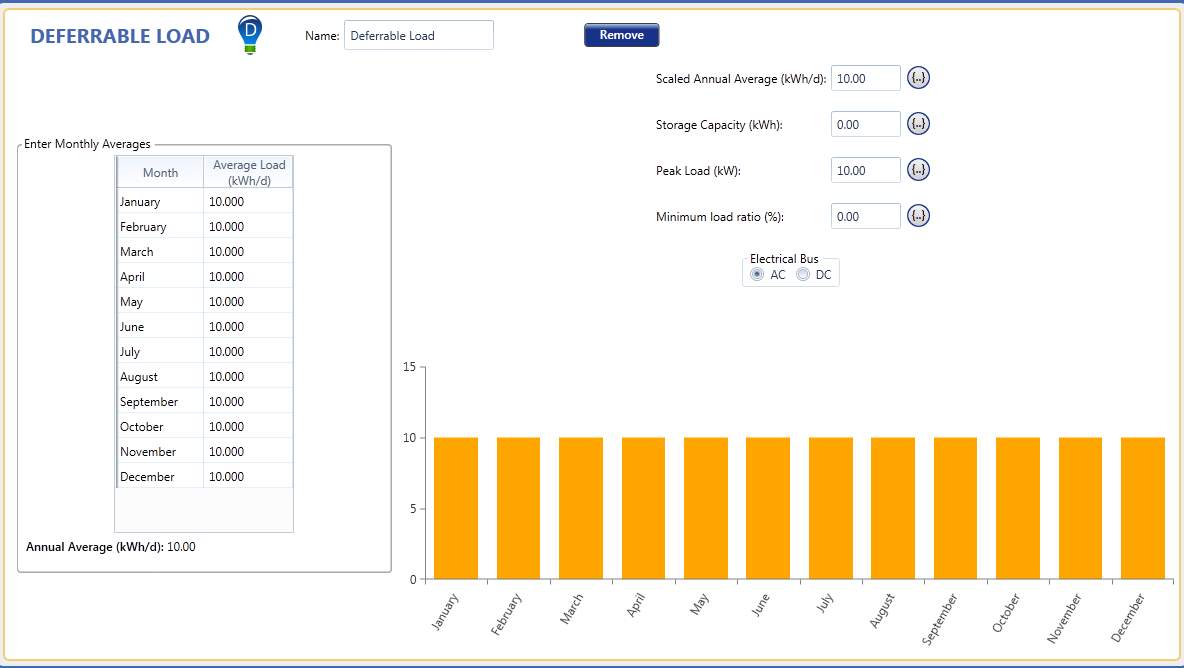
Appendix 2
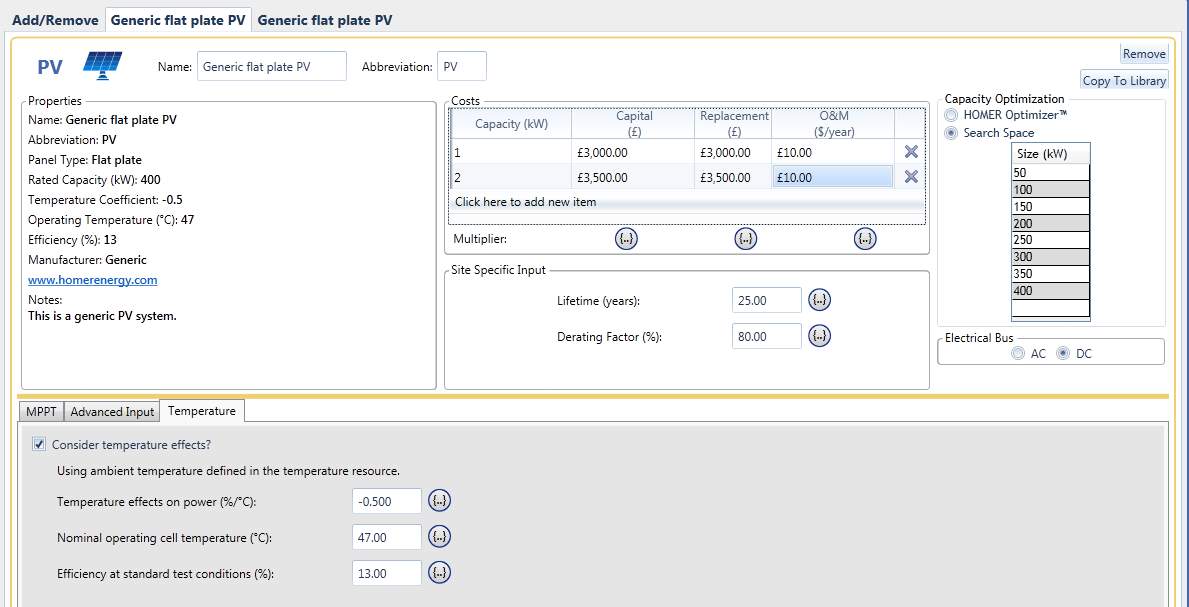
Appendix 3
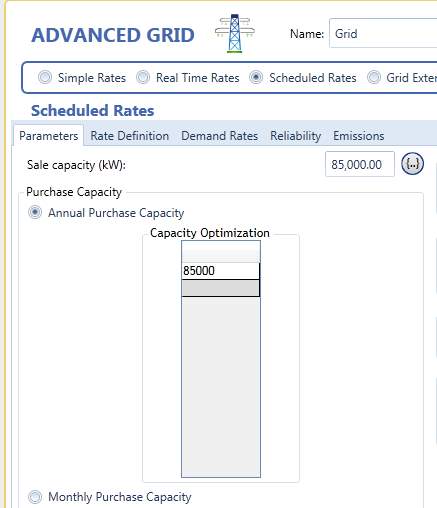
Appendix 4
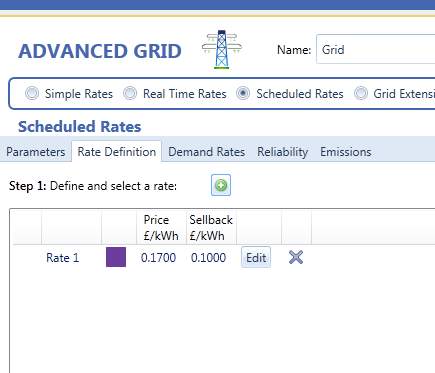
Appendix 5
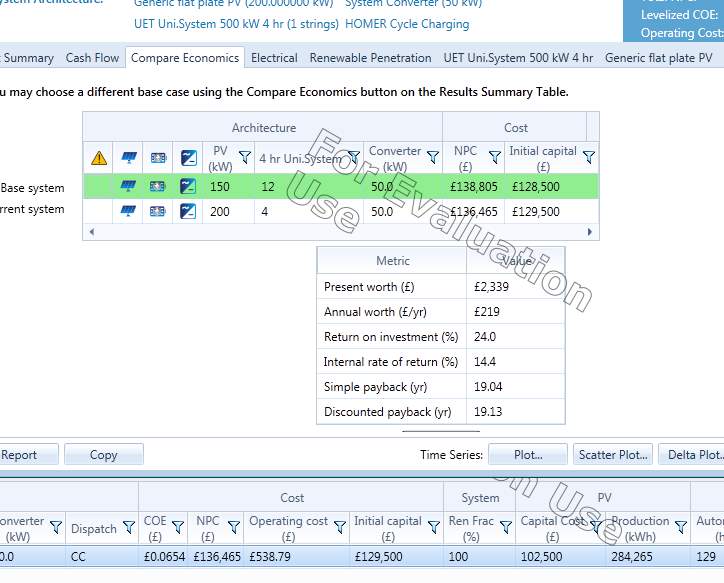
Appendix 6
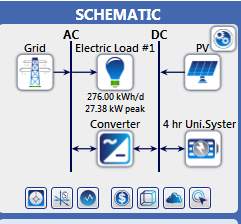
Appendix 7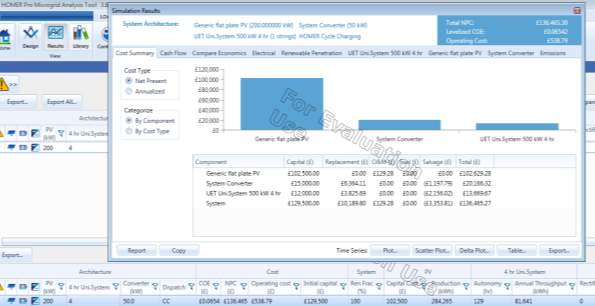
Appendix 8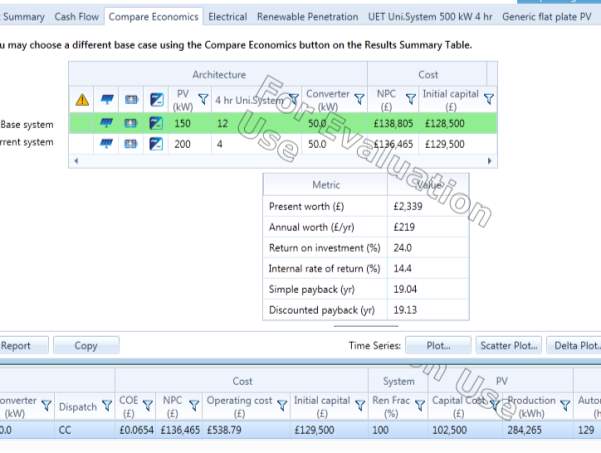
References
- Able-Thomas, U., Hill, R., O’Keefe, P. & Pearsall, N.M. 1994, “Cost effectiveness & benefits of photovoltaics in the Gambia”, Renewable Energy, vol. 5, no. 1, pp. 247-249.
- Able-Thomas, U., Hill, R., O’Keefe, P. & Pearsall, N.M. 1995, “Dissemination of photovoltaics in The Gambia”, Renewable Energy, vol. 6, no. 5, pp. 507-513.
- Azarpour, A., Suhaimi, S., Zahedi, G. and Bahadori, A. (2013). A Review on the Drawbacks of Renewable Energy as a Promising Energy Source of the Future. 1st ed. [ebook] Jeddah: Springer-Verlag, pp.317–328. Available at: https://link.springer.com/article/10.1007/s13369-012-0436-6
- Bullis, K. (2009). A Zero-Emissions City in the Desert. [online] Available at: https://www.technologyreview.com/s/412195/a-zero-emissions-city-in-the-desert/
- Danowitz, A. (2010). Solar Thermal vs. Photovoltaic. 1st ed. [ebook] Stanford: Stanford University. Available at: http://large.stanford.edu/courses/2010/ph240/danowitz2/
- Data.un.org. (2015). UNdata | country profile | Gambia. [online] Available at: http://data.un.org/CountryProfile.aspx?crName=gambia
- Dauenhauer, P.M., Frame, D.F., Strachan, S., Dolan, M., Mafuta, M., Chakraverty, D. & Henrikson, J. 2013, “Remote monitoring of off-grid renewable energy Case studies in rural Malawi, Zambia, and Gambia”, IEEE, , pp. 395.
- DISSEMINATION OF PHOTOVOLTAICS IN THE GAMBIA. (1995). 1st ed. [ebook] Newcastle, pp.507-513.
- Eckebil, J. (2000). Environment and Natural Resources Working Paper. 1st ed. [ebook] Rome: Natural Resources Management and Environment Department. Available at: http://www.fao.org/docrep/003/X8054E/x8054e04.htm
- Ernst & Young and Fraunhofer Institute for Solar Energy Systems (Fraunhofer) (2011), MENA Assessment of the Local Manufacturing Potential for Concentrated Solar Power (CSP) Projects, The World Bank, Final Report, Washington, D.C.
- H. Bauer, G. (2015). Photovoltaic Solar Energy Conversion. 1st ed. [ebook] Berlin: Springer, pp.5-10.
- http://www.conserve-energy-future.com/. (2009). What is Renewable Energy?. [online] Available at: http://www.conserve-energy-future.com/advantages-and-disadvantages-of-renewable-energy.php
- http://www.ucsusa.org/. (2013). Benefits of Renewable Energy Use. [online] Available at: http://www.ucsusa.org/clean-energy/renewable-energy/public-benefits-of-renewable-power#.WPAq_vkrLmh
- Kanteh Sakiliba, S., Sani Hassan, A., Wu, J., Saja Sanneh, E. & Ademi, S. 2015, “Assessment of Stand-Alone Residential Solar Photovoltaic Application in Sub-Saharan Africa: A Case Study of Gambia”, Journal of Renewable Energy, vol. 2015, pp. 1-10
- ” Kalogirou, S.A. 2004, “Solar thermal collectors and applications”, Progress in Energy and Combustion Science, vol. 30, no. 3, pp. 231-295.
- Landau, C. (2015). Optimum Tilt of Solar Panels. 1st ed. [ebook] Available at: http://www.solarpaneltilt.com/
- Lotsch, H.K.V., Goetzberger, A., U.Hoffmann, V., Rhodes, W.T., Asakura, T., Brenner, K., H♭Þnsch, T.W., Kamiya, T., Krausz, F., Monemar, B., Venghaus, H., Weber, H., Weinfurter, H., SpringerLink (Online service) & Springer ebook collection. Physics and Astronomy without Lecture Notes 2005, Photovoltaic Solar Energy Generation, Springer Berlin Heidelberg, Berlin, Heidelberg.
- Molki, A. 2011, “Temperature effect on photovoltaic cells”, Physics Education, vol. 46, pp. 523.
- Musunuri, R., Sánchez, D. and Rodriguez, R. (2007). SOLAR THERMAL ENERGY. 1st ed. [ebook] Gävle: Energy Engineering, University of Gavle, pp.3-28. Available at: http://www.solarthermalworld.org/sites/gstec/files/story/2015-06-20/solarthermal.pdf
- Mwenechanya, J. (2013). THE GAMBIA: LICENSING AND INTERCONNECTION. 1st ed. [ebook] Banjul, pp.2-6. Available at: http://pubs.naruc.org/pub/538EDBDD-2354-D714-5175-7D8B183110BD
- Ministry of Energy (2006) Draft RE Master Plan – Module II Resource Assessment, Supply Options, Demand-Supply Balance, Economic Study and Investment Plan,
- Nawec.gm. (2017). Home. [online] Available at: http://www.nawec.gm/
- OMVG ENERGY PROJECT ENVIRONMENTAL AND SOCIAL IMPACT ASSESSMENT SUMMARY. (2017). 1st ed. Dakar, Senegal: OMVG ENERGY PROJECT.
- PRACTICAL APPLICATIONS OF PHOTOVOLTAICS ?. (2009). 1st ed. World Association of Technology Teachers, p.1.
- Razak, A., Irwan, Y.M., Leow, W.Z., Irwanto, M., Safwati, I. & Zhafarina, M. 2016, “Investigation of the Effect Temperature on Photovoltaic (PV) Panel Output Performance”,International Journal on Advanced Science, Engineering and Information Technology, vol. 6, no. 5, pp. 682-688.
- Remote Monitoring of Off-Grid Renewable Energy Case Studies in rural Malawi, Zambia, and Gambia. (2013). 1st ed. [ebook] Glasgow, pp.1-6. Available at: http://ieeexplore.ieee.org.gcu.idm.oclc.org/document/6713718/
- Sanneh, E. and Hu, A. (2009). Lighting Rural and Peri-Urban Homes of the Gambia Using Solar Photovoltaics (PV). 1st ed. [ebook] Taipei: Institute of Environmental Engineering Technology, pp.99-110. Available at: https://benthamopen.com/contents/pdf/TOREJ/TOREJ-2-99.pdf
- Singh, G., Alzouma Nouhou, S. and Youba Sokona, M. (2013). RENEWABLES READINESS ASSESSMENT 2013. 1st ed. [ebook] Banjul: IRENA, pp.13,17,18,27. Available at: http://www.irena.org/DocumentDownloads/Publications/RRA_Gambia.pdf
- Solar photovoltaic energy”, 2014, Appropriate Technology, vol. 41, no. 1, pp. 52-57.
- The Gambia 2013 Population and Housing Census Preliminary Results. (2013). 1st ed. [ebook] Kanifing: The Gambia Bureau of Statistics Kanifing Institutional Layout, pp.9-15. Available at: http://www.gbos.gov.gm/uploads/census/The%20Gambia%20Population%20and%20Housing%20Census%202013%20Provisional%20Report.pdf
- The Gambia Sustainable Energy for All Rapid Assessment and Gap Analysis. (2012). 1st ed. [ebook] Banjul: UNDP, pp.12-21,29,36-38. Available at: http://www.se4all.org/sites/default/files/Gambia_RAGA_EN_Released.pdf
- thealternativedaily.com. (2017). 6 Benefits of Renewable Energy We Need to Consider. [online] Available at: http://www.thealternativedaily.com/benefits-of-renewable-energy/
- Waco, D. (2011). How Heat Affects Solar Panel Efficiency. [online] CivicSolar. Available at: https://www.civicsolar.com/support/installer/articles/how-heat-affects-solar-panel-efficiency
- World Bank (2010) Energy Sector Diagnostic Review. Prepared for the Government of the Republic of The Gambia.
Cite This Work
To export a reference to this article please select a referencing stye below:
Related Services
View allRelated Content
All TagsContent relating to: "Community Development"
Community development is defined by the UN as "a process where community members come together to take collective action and generate solutions to common problems".
Related Articles
DMCA / Removal Request
If you are the original writer of this dissertation and no longer wish to have your work published on the UKDiss.com website then please:




